Reactive
Spring Security 5
Workshop
https://andifalk.github.io/reactive-spring-security-5-workshop

Andreas Falk
Novatec Consulting GmbH
https://www.novatec-gmbh.de
andreas.falk@novatec-gmbh.de / @andifalk

Our Security Offerings
- Security Awareness Trainings
- Threat Modeling Trainings & Consulting
- OAuth 2.0 & OpenID Connect 1.0 Trainings & Consulting
- Spring Security Trainings
- Security Audits
The
Reactive Spring Security Workshop
https://andifalk.github.io/reactive-spring-security-5-workshop https://github.com/andifalk/reactive-spring-security-5-workshop
Part 1
- Introduction to Reactive Programming
- Spring Security Basics
- Spring Security Practice (Hands-On) Part 1
- Authentication
- Password Security & Upgrades
- Lunch-Break
Part 2
- Spring Security Practice (Hands-On) Part 2
- Authorization
- Automated Security Tests
- Introduction into OAuth 2.0 and OpenID Connect
- Spring Security OAuth2/OIDC (Hands-On)
- Resource Server
- OIDC Client
In the meantime...
Prepare for the hands-on parts:
https://github.com/andifalk/reactive-spring-security-5-workshop/tree/master/setup
Reactive Systems
Reactive Systems
“[...] we want systems that are Responsive, Resilient, Elastic and Message Driven. We call these Reactive Systems.”
Reactive Systems
- Responsive -
“The system responds in a timely manner if at all possible”
Reactive Systems
- Resilient -
“The system stays responsive in the face of failure”
Reactive Systems
- Elastic -
“The system stays responsive under varying workload”
Reactive Systems
- Message Driven -
“Reactive Systems rely on asynchronous message-passing”
Reactive Streams
“Reactive Streams is an initiative to provide a standard for asynchronous stream processing with non-blocking back pressure..”
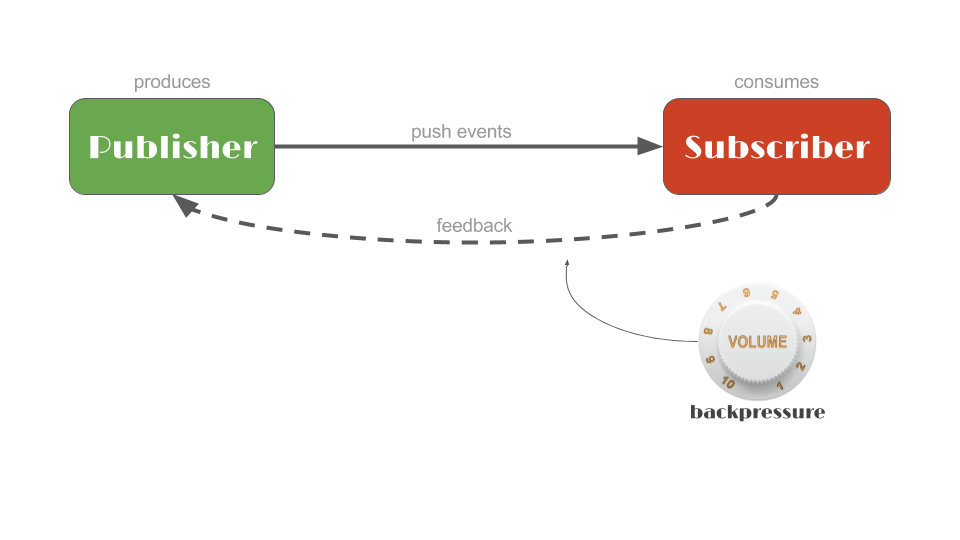
Reactive Streams
Implementations
Publisher
package org.reactivestreams;
public interface Publisher<T> {
public void subscribe(Subscriber<? super T> s);
}
Subscriber
package org.reactivestreams;
public interface Subscriber<T> {
public void onSubscribe(Subscription s);
public void onNext(T t);
public void onError(Throwable t);
public void onComplete();
}
Subscription
package org.reactivestreams;
public interface Subscription {
public void request(long n);
public void cancel();
}
Processor
package org.reactivestreams;
public interface Processor<T, R> extends
Subscriber<T>, Publisher<R> {}
Reactive Streams
Included Since Java 9
java.util.concurrent.Flow.Publisher<T>
java.util.concurrent.Flow.Subscriber<T>
java.util.concurrent.Flow.Subscription
java.util.concurrent.Flow.Processor<T, R>
Project Reactor
Project Reactor
“Reactor is a fourth-generation1 reactive library for building non-blocking applications on the JVM based on the Reactive Streams Specification”
1) David Karnok’s Generations of Reactive classification

Composable reactive types
- Mono -
An Asynchronous 0-1 Result

Composable reactive types
- Flux -
An Asynchronous Sequence of 0-N Items

Imperative vs. Reactive
Imperative
String msg = "World";
String upperCaseMsg = msg.toUpperCase();
String greeting = "Hello " + upperCaseMsg + "!";
System.out.println(greeting);
Reactive
Mono.just("World")
.map(String::toUpperCase)
.map(um -> "Hello " + um + "!")
.subscribe(System.out::println);
Reactor Debug agent
Debugging Reactive code can sometimes be challenging
spring.io/blog/2019/03/28/reactor-debugging-experience
https://projectreactor.io/docs/core/release/reference/#debugging
BlockHound
Detect blocking code
Let's try this...
intro-labs/reactive-playground
projectreactor.io/docs/core/release/reference
projectreactor.io/docs/core/release/reference/#which-operator
Spring WebFlux
Servlet vs. Reactive Web Stack
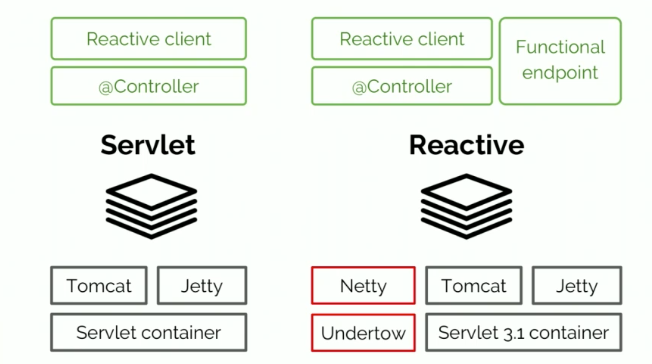
Web Threading Model

Reactive Data Stores

Reactive Relational Database Connectivity (R2DBC)
- Reactive programming APIs for relational databases
- JDBC: Blocking - R2DBC: Non-blocking reactive API
- R2DBC drivers available for:
- Google Cloud Spanner
- MySQL, MariaDB, PostgreSQL, H2
- Microsoft SQL Server
Reactive Spring Book
(Josh Long)
— https://leanpub.com/reactive-spring

Security ?
“From my experience all software developers are now security engineers wether they know it, admit to it or do it [...]”
“If it's not secure, it's not guaranteed to be anything else either”

OWASP Top 10 2017
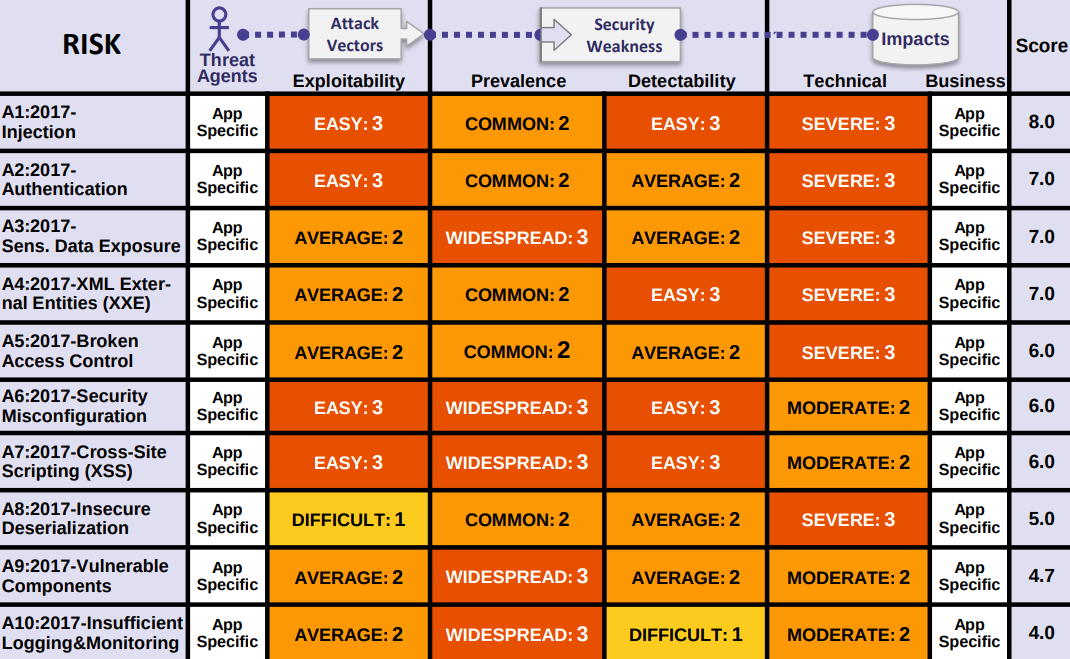
Application Security Verification Standard
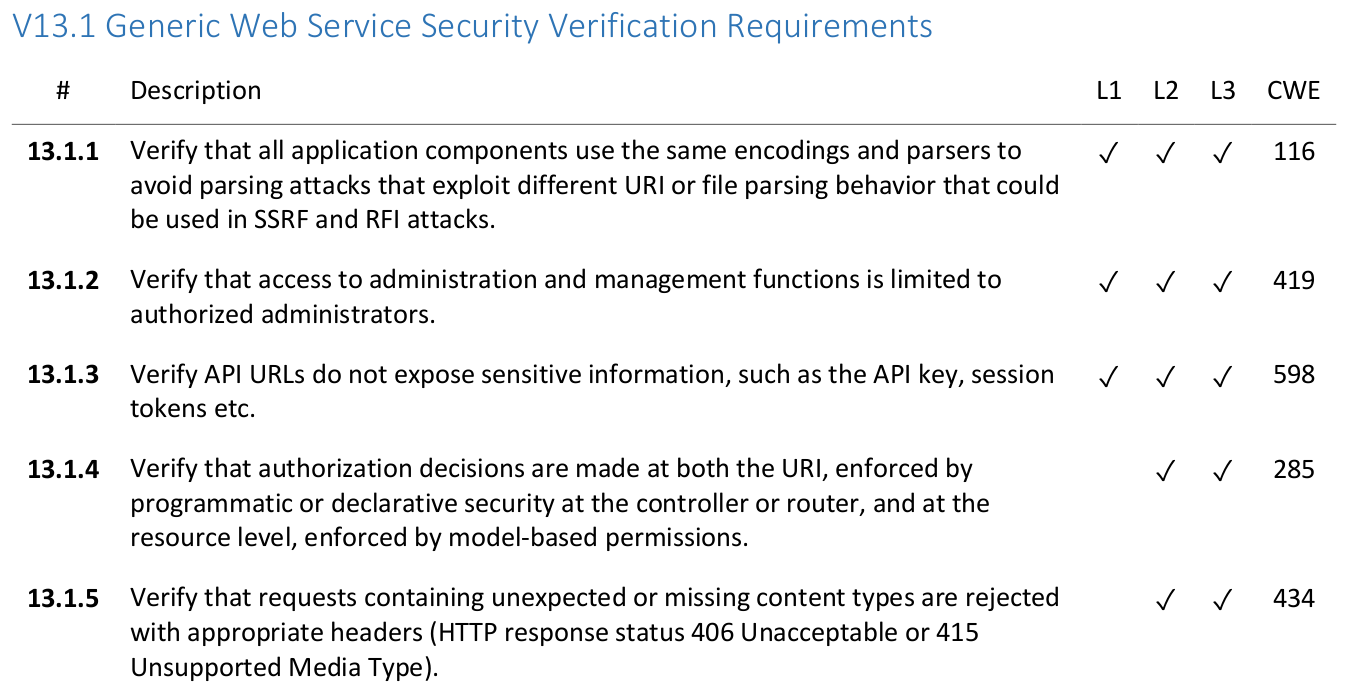
Spring Security Basics
Spring Security Overview

Spring Security 5
- Authentication & Authorization
- Password Encoding & Crypto (BCrypt, Argon2, ...)
- Support for Servlet & Reactive Web Applications
- Support for OAuth 2.0 & OpenID Connect 1.0
- Authz Code (+ PKCE) & Client Credentials
- Supports JWT and Opaque Tokens
- Testing Support for Authentication/Authz/JWT
Spring Security 5
Secure By Default
- Authentication required for all HTTP endpoints
- Default Validation for JWT
- Signature, Issuer, Expiration
- Includes Actuator (Monitoring) Endpoints
- Except “health” and “info”
- Session Fixation Protection
- Session Cookie (HttpOnly, Secure)
- CSRF Protection
- Security Response Headers
Spring Security
Servlet Web Stack
Security Dependencies
Servlet Web Stack
...
implementation
'org.springframework.boot:spring-boot-starter-security'
implementation
'org.springframework.boot:spring-boot-starter-web'
...
Configuration
Servlet Web Stack
@Configuration
public class WebSecurityConfiguration
extends WebSecurityConfigurerAdapter {
@Override
protected void configure(HttpSecurity http)
throws Exception {
http.authorizeRequests()
.anyRequest()
.authenticated()
.and()
.httpBasic().and().formLogin();
}
}
Authentication - Servlet Web Stack
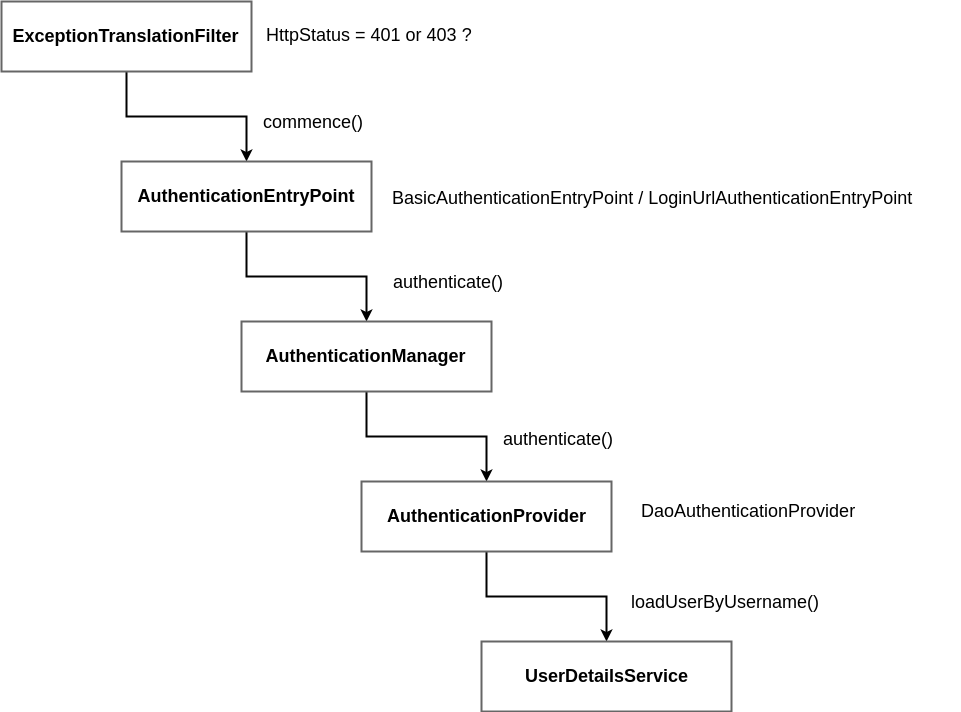
Spring Security
Reactive Web Stack
Security Dependencies
Reactive Web Stack
...
implementation
'org.springframework.boot:spring-boot-starter-security'
implementation
'org.springframework.boot:spring-boot-starter-webflux'
...
Configuration
Reactive Web Stack
@Configuration
@EnableWebFluxSecurity
public class ReactiveWebSecurityConfiguration {
@Bean
SecurityWebFilterChain
securityWebFilterChain(ServerHttpSecurity http) {
return http.authorizeExchange()
.anyExchange()
.authenticated()
.and()
.httpBasic().and().formLogin().and().build();
}
}
Authentication - Reactive Web Stack
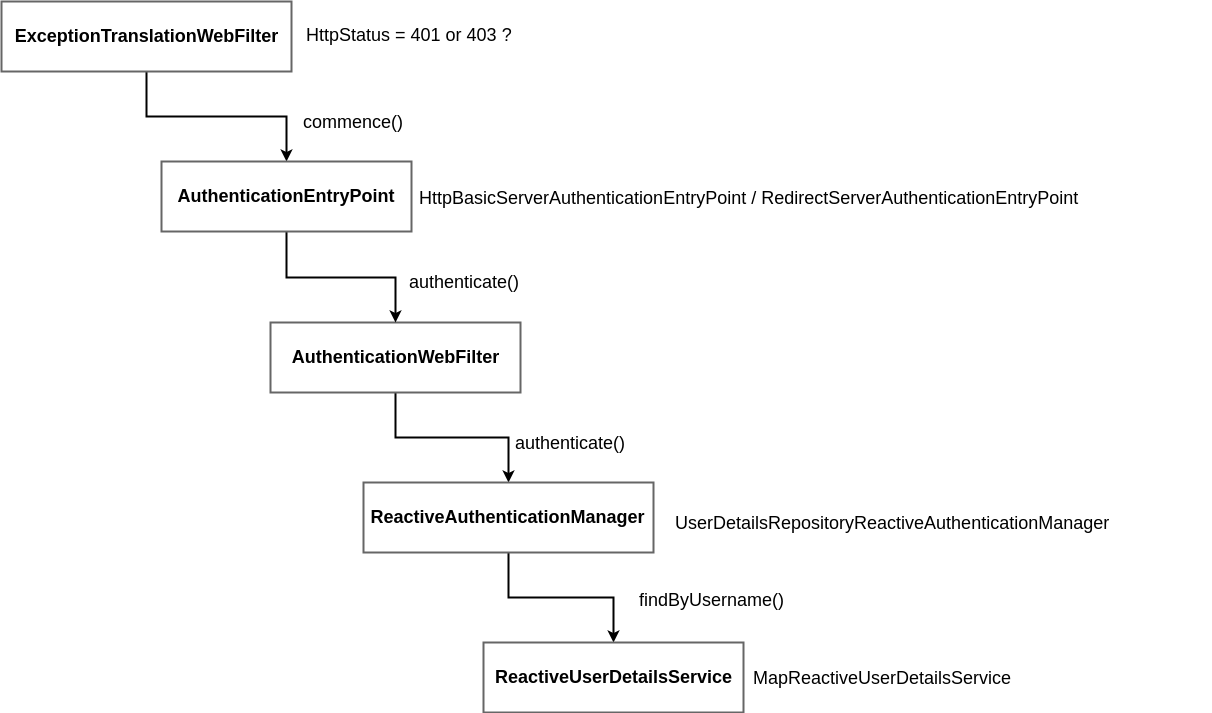
Spring Security
Hands-On
Hands-On application
An online book library
- Administer books
- List available books
- Borrow an available book
- Return a borrowed book
- Administer library users
Library Service

Library Service Architecture
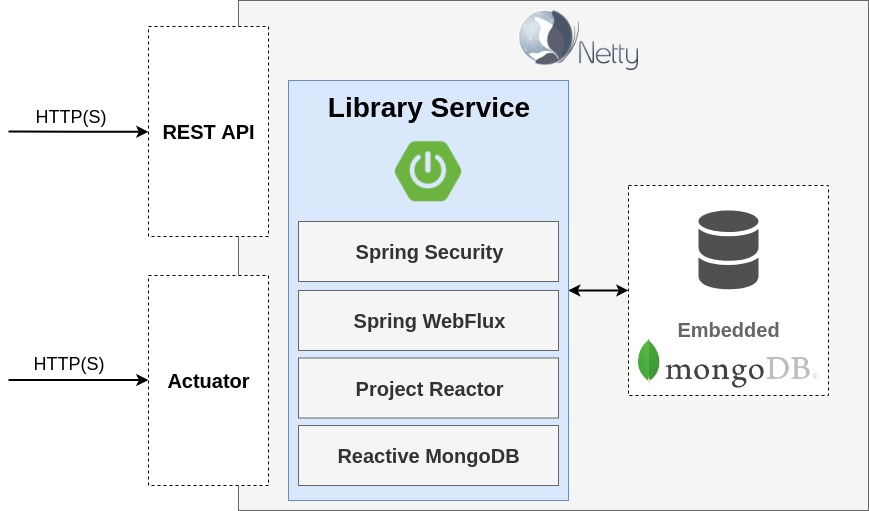
Library Service API Docs
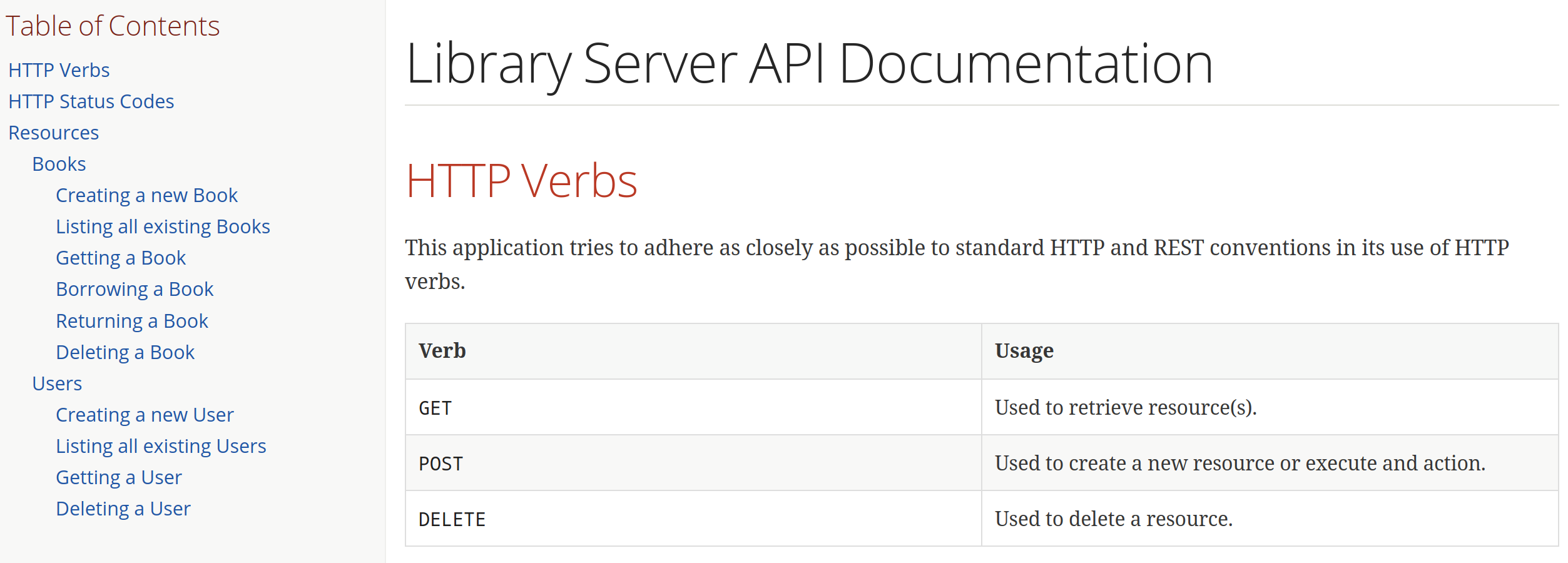
https://andifalk.github.io/reactive-spring-security-5-workshop/api-doc.html
Workshop Steps
- Lab 1: Authentication (Auto Configuration)
- Lab 2: Customized Authentication
- Lab 3: Authorization
- Lab 4: Automated Security Tests
Lab 1: Authentication
(Auto Configuration)

Lab 2: Authentication
(Customized)

Lab 3: Authorization

Lab 4: Automated Security Tests
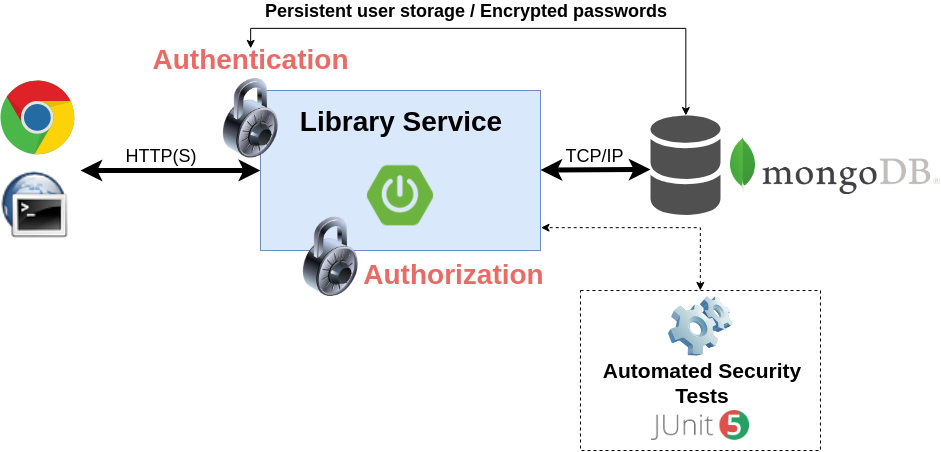
Let's start...
Requirements
Internet Access
Java JDK version 8 or 11
A Java IDE (Eclipse, STS, IntelliJ, VS Code, NetBeans, ...)
Workshop Code
Get via git clone or download as zip file:
https://github.com/andifalk/reactive-spring-security-5-workshop
Workshop Tutorial
https://andifalk.github.io/reactive-spring-security-5-workshop/workshop-tutorial.html
Part 2
- Introduction into OAuth 2
- Introduction into OpenID Connect
- Spring Security OAuth2/OIDC (Hands-On)
- Authorization Code Flow Demo
- Resource Server
- OIDC Client
In the meantime...
Make sure your Keycloak instance is set up and running
OAuth 2.0
101
RFC 6749: The OAuth 2.0 Authorization Framework
RFC 6750: OAuth 2.0 Bearer Token Usage
RFC 6819: OAuth 2.0 Threat Model and Security Considerations
What is OAuth 2.0?
OAuth 2.0 is an authorization delegation framework

OAuth 2.0 Model
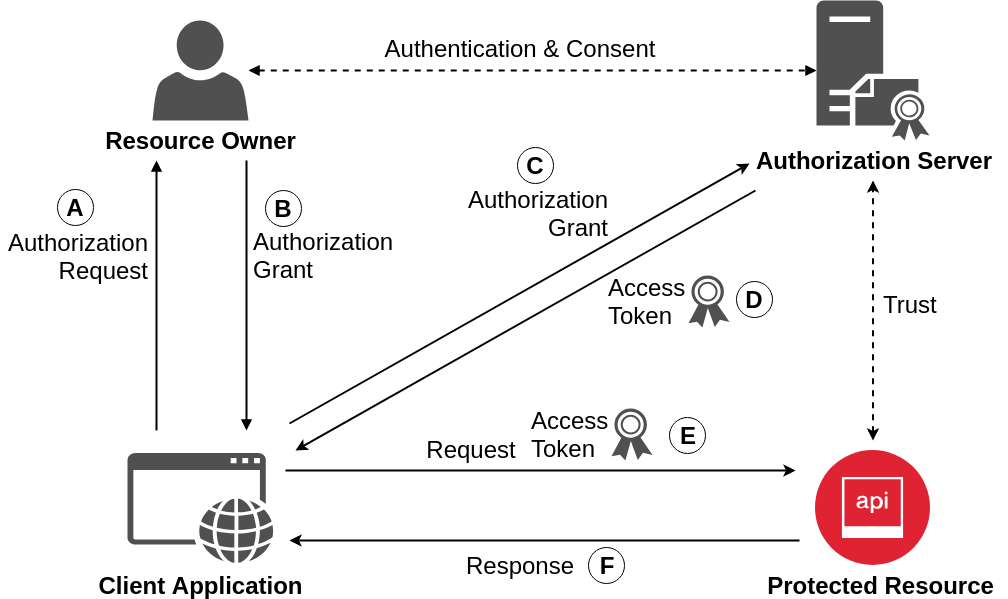
OAuth 2.0 Grant Flows
| Client Type | Flow | Refresh Tokens |
|---|---|---|
| Confidential | Authorization Code | X |
| Public (Native) | Authorization Code (PKCE) | X |
| Public (SPA) | Implicit | -- |
| Trusted | RO Password Creds | X |
| No Resource Owner | Client Credentials | -- |
Authorization Code Grant Flow
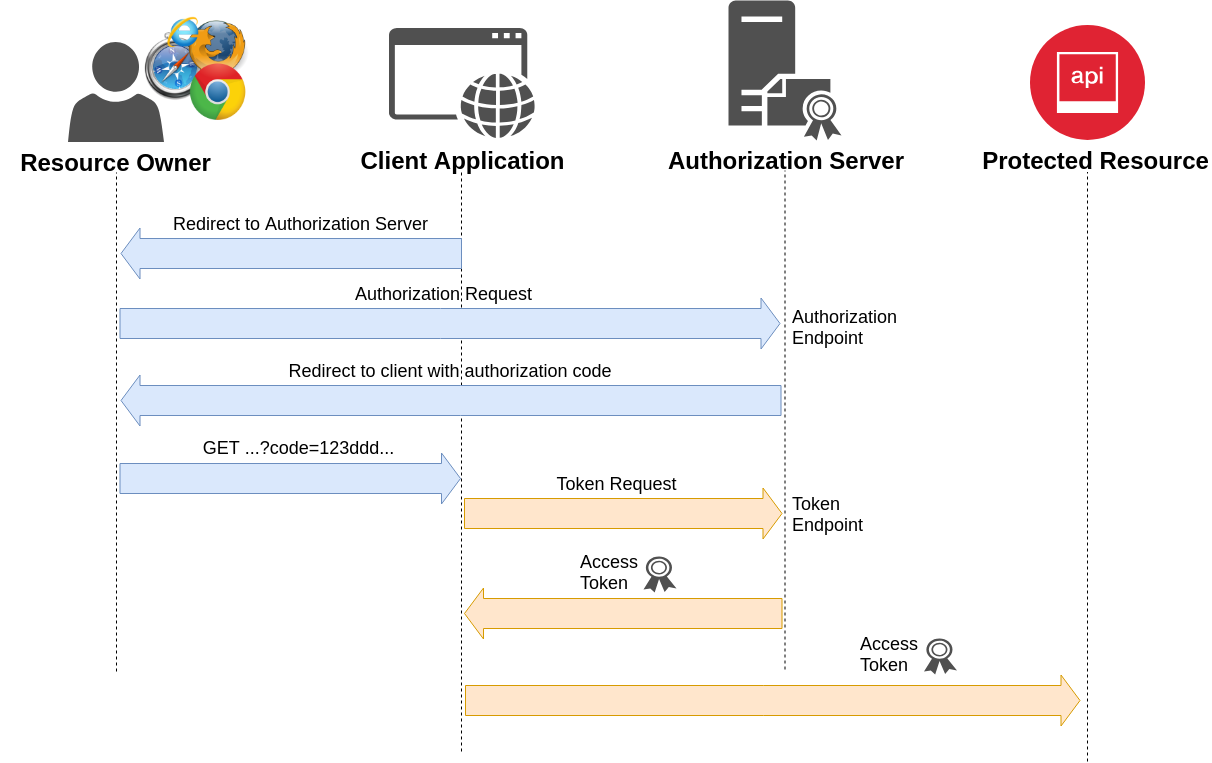
Authorization code grant flow

Authorization code grant flow

Authorization code grant flow

Authorization code grant flow

Authorization code grant flow

Authorization code grant flow
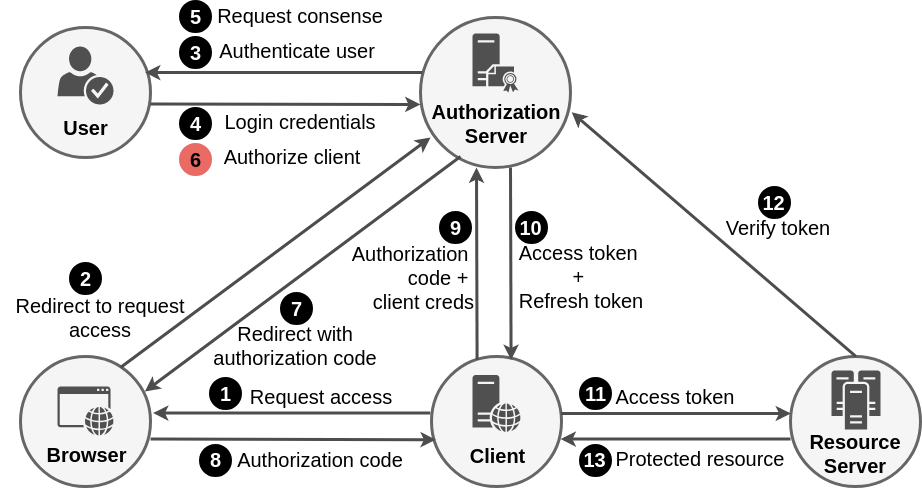
Authorization code grant flow

Authorization code grant flow
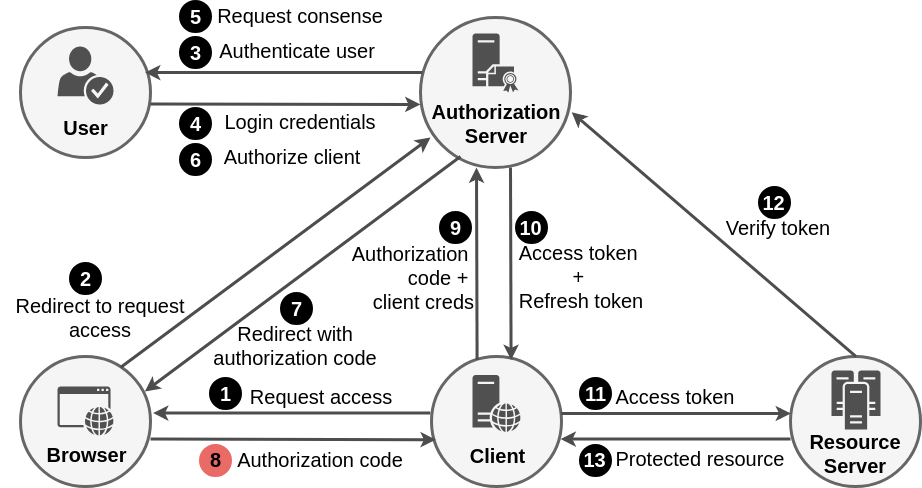
Authorization code grant flow

Authorization code grant flow
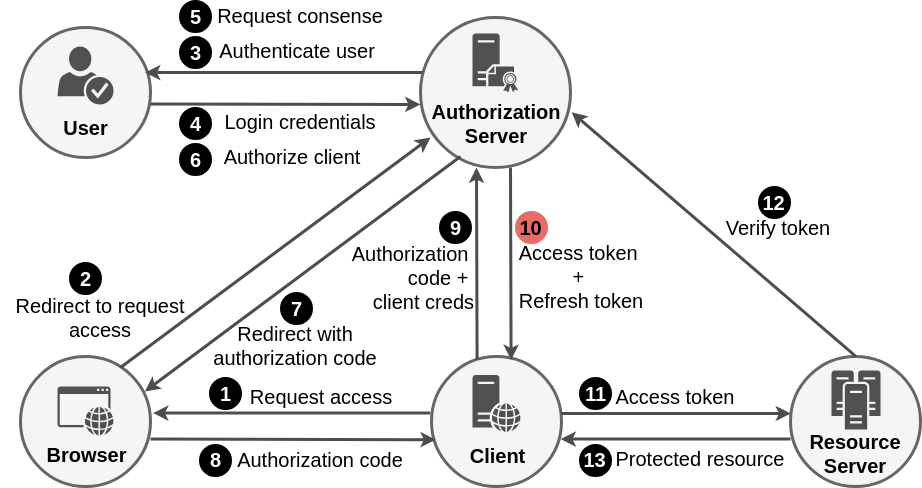
Authorization code grant flow

Authorization code grant flow
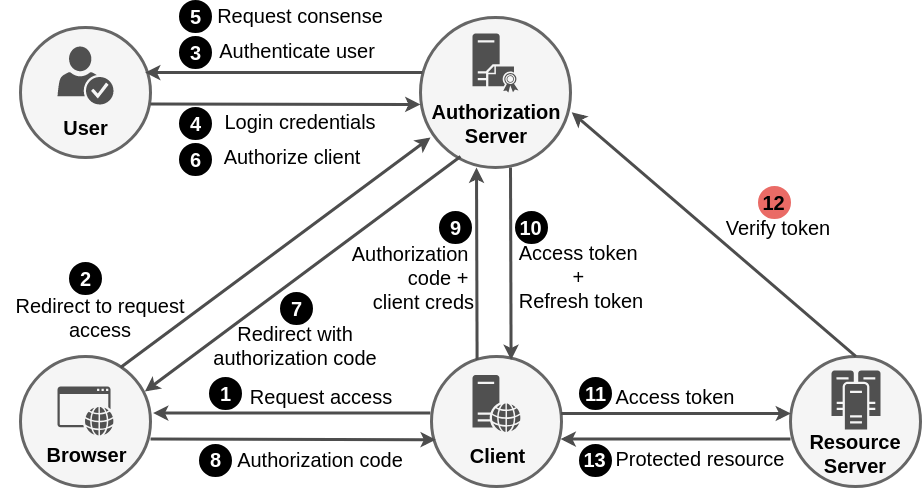
Authorization code grant flow
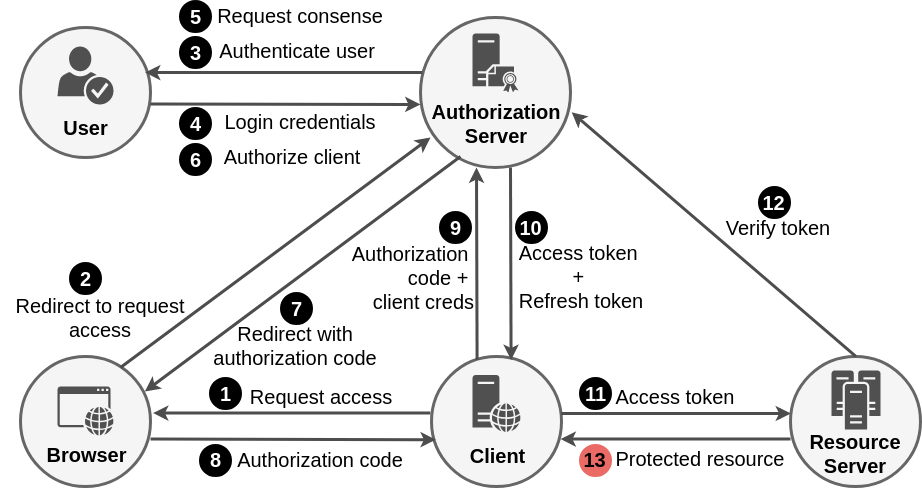
We'll see
Authorization Code Grant Flow
in action as part of Intro Lab
Implicit Flow Attacks
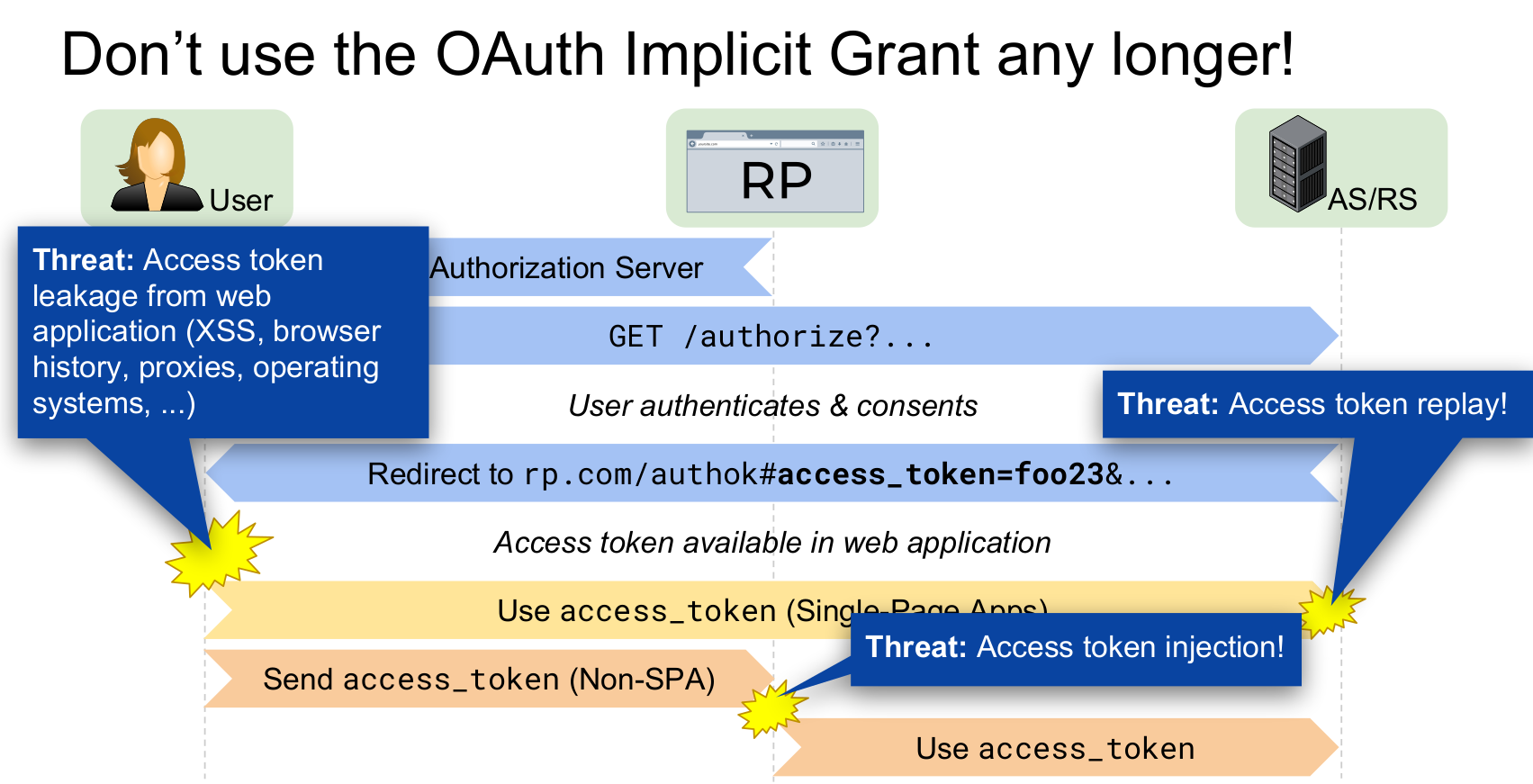
Source: Torsten Lodderstedt and Daniel Fett
“OAuth 2.1” Grant Flows
| Client Type | Flow | Refresh Tokens |
|---|---|---|
| Confidential | Authorization Code (PKCE) | X |
| Public (Native) | Authorization Code (PKCE) | X |
| Public (SPA) | Authorization Code (PKCE) | -- |
| Trusted | RO Password Creds | X |
| No Resource Owner | Client Credentials | -- |
Proof Key for Code Exchange by OAuth Public Clients (PKCE)
(“Pixy”)
Mitigates authorization code attacks
Mitigates token leakage in SPAs
PKCE - Authorization Request
GET https://authserver.example.com/authorize
?response_type=code
&client_id=abcdefg
&redirect_uri=https://client.abc.com/callback
&scope=api.read api.write
&state=xyz
&code_challenge=xyz...
&code_challenge_method=S256
PKCE - Token Request
POST https://authserver.example.com/token
Content-Type:
application/x-www-form-urlencoded
grant_type=authorization_code&code=ab23bhW56Xb
&redirect_uri=https://client.abc.com/callback
&client_id=123&client_secret=456
&code_verifier=4gth4jn78k_8
OpenID Connect 1.0
101
OpenID Connect Core 1.0
OpenID Connect Dynamic Client Registration 1.0
OpenID Connect Discovery 1.0
OpenID Connect 1.0 is for Authentication

OIDC additions to OAuth 2.0
- ID Token
- User Info Endpoint
- OpenID Provider Discovery
ID Token
JSON Web token (JWT)
Base 64 Encoded JSON Formatted Value of...
...Header
...Payload
...Signature
GET / HTTP/1.1
Host: localhost:8080
Authorization: Bearer eyJ0eXAiOiJKV1QiLCJhbGciOiJSUzI1N...
JSON Web Token (JWT)
Header
{
typ: "JWT",
alg: "RS256"
}
Payload
{
iss: "https://identity.example.com",
aud: "my-client-id",
exp: 1495782385,
nonce: "N0.46824857243233511495739124749",
iat: 1495739185,
at_hash: "hC1NDSB8WZ9SnjXTid175A",
sub: "mysubject",
auth_time: 1495739185,
email: "test@gmail.com"
}
ID Token Claims
| Scope | Required | Description |
|---|---|---|
| iss | X | Issuer Identifier |
| sub | X | Subject Identifier |
| aud | X | Audience(s) of this ID Token |
| exp | X | Expiration time |
| iat | X | Time at which the JWT was issued |
| auth_time | (X) | Time of End-User authentication |
| nonce | -- | Associate a client with an ID Token |
Access Tokens in OIDC
Format and content still not standardized
But...
OAuth 2 Access Token JWT Profile
Required claims: iss, exp, aud, sub, client_id
Consider privacy restrictions for identity claims
Authorization claims according to SCIM Core (RFC7643):
- Groups
- Entitlements
- Roles
System for Cross-domain Identity Management (SCIM)
JSON Web Token (JWT) Profile for OAuth 2.0 Access Tokens
Token Validation
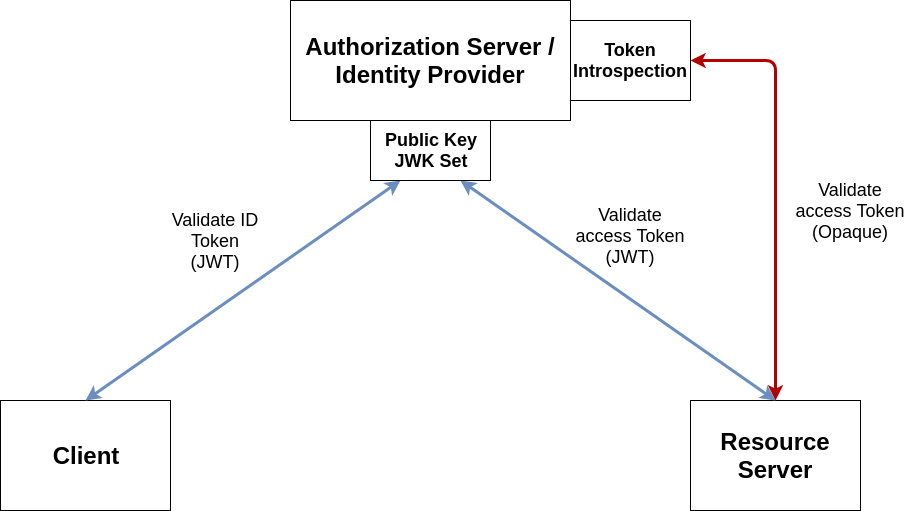
User Info Endpoint
GET /userinfo HTTP/1.1
Host: identityserver.example.com
Authorization: Bearer SlAV32hkKG
HTTP/1.1 200 OK
Content-Type: application/json
{
"sub": "248289761001",
"name": "Jane Doe",
"given_name": "Jane",
"family_name": "Doe",
"preferred_username": "j.doe",
"email": "janedoe@example.com",
"picture": "http://example.com/janedoe/me.jpg"
}
OpenID Connect 1.0 Configuration
https://idp.example.com/.well-known/openid-configuration
{
"authorization_endpoint": "https://idp.example.com/auth",
"grant_types_supported": [
"authorization_code",
"implicit",
"refresh_token"
],
"issuer": "https://idp.example.com",
"jwks_uri": "https://idp.example.com/keys",
"token_endpoint": "https://idp.example.com/token",
"userinfo_endpoint": "https://idp.example.com/userinfo",
...
}
Hands-On Part
OAuth 2.0 & OpenID Connect 1.0
With Spring Security 5
“Legacy” Spring Security OAuth2 Stack

“New” Spring Security 5
OAuth2/OIDC Stack

“New” Spring Security 5
OAuth2/OIDC Stack

We will use THIS stack !!!
Let's Code!!
Make sure you have setup and started keycloak
THEN
Try the intro lab for Auth Code Demo
and follow instructions for Labs 5 & 6 in the
online tutorial
Starting Keycloak
...on Linux/Mac OS
[keycloak_install_dir]/bin/standalone.sh
[keycloak_install_dir]\bin\standalone.bat
Hands-On Labs
- Intro-Lab: Authorization Code Flow Demo
- Lab 5: OAuth2/OIDC Resource Server
- Lab 6: OAuth2/OIDC Client (Auth Code Flow)
Please follow online tutorial in GitHub Repo
Intro-Lab
Authorization Code Grant Flow
In Action
See intro-labs/auth-code-demo for instructions
Labs 5 & 6: Resource Server and Client
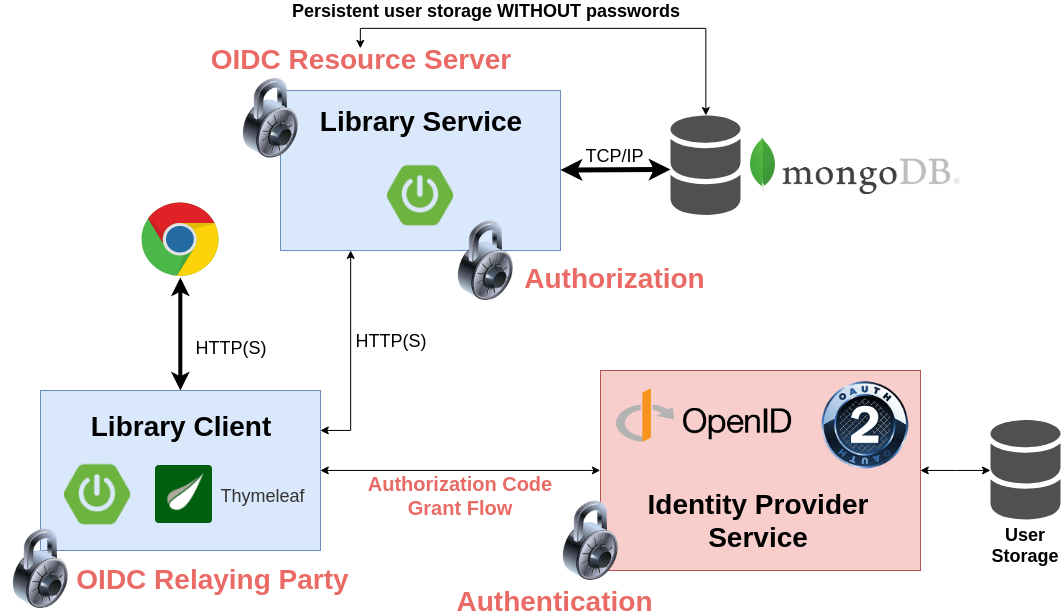
Hands-On client & server
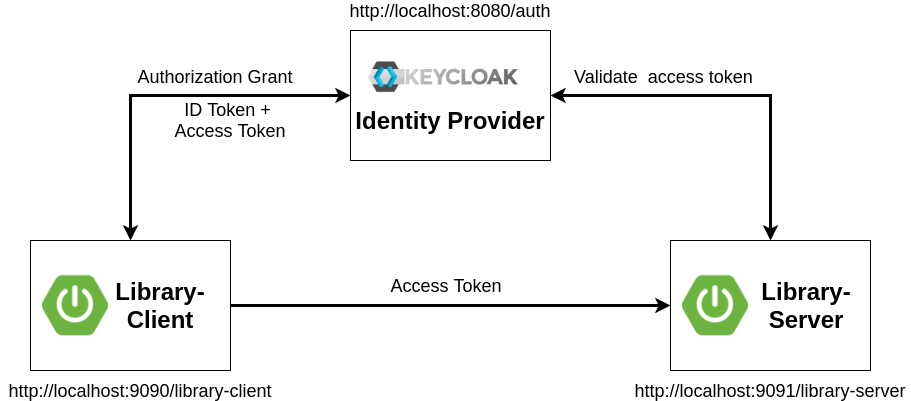
What's new in
Spring Security
5.2 & 5.3
Spring Security 5.2 (08/2019)
- Client Support for PKCE
- OpenID Connect RP-Initiated Logout
- Support for OAuth 2.0 Token Introspection
- Resource Server Multi-tenancy (Servlet & Reactive)
- Use symmetric keys with JwtDecoder
- JWT Flow API in Test Support
Spring Security 5.2.0 M2 GitHub Issues
Spring Security 5.2.0 M3 GitHub Issues
Spring Security 5.2.0 RC1 GitHub Issues
OAuth 2.0 Token Introspection
Opaque Tokens
class ResSrvConfig extends WebSecurityConfigurerAdapter {
@Override
protected void configure(HttpSecurity http)
throws Exception {
http.oauth2ResourceServer()
.opaqueToken()
.introspectionUri(this.introspectionUri)
.introspectionClientCredentials(
this.clientId, this.clientSecret);
}
}
Resource Server Multi-tenancy
class ResSrvConfig extends WebSecurityConfigurerAdapter {
@Override protected void configure(HttpSecurity http) {
http.oauth2ResourceServer()
.authenticationManagerResolver(
multitenantAuthenticationManager());
}
@Bean AuthenticationManagerResolver<HttpServletRequest>
multiTenantAuthMgr() {...}
AuthenticationManager jwt() {...}
AuthenticationManager opaque() {...}
}
https://github.com/spring-projects/spring-security/issues/6727
Use symmetric keys with JwtDecoder
class ResSrvConfig extends WebSecurityConfigurerAdapter {
@Value("${spring.security.oauth2.resourceserver.
jwt.key-value}") RSAPublicKey key;
@Override protected void configure(HttpSecurity http) {
http.oauth2ResourceServer().jwt().decoder(jwtDecoder());
}
@Bean JwtDecoder jwtDecoder() throws Exception {
return NimbusJwtDecoder.
withPublicKey(this.key).build();
}
}
JWT Flow API in Test Support
public class OAuth2ResourceServerTest {
@Test
public void testRequestPostProcessor() {
mockMvc.perform(get("/message")
.with(mockAccessToken().scope("message:read")))
.andExpect(status().isOk())
mockMvc.perform(get("/")
.with(jwt().claim(SUB, "the-subject")))
.andExpect(status().isOk())
}
}
Spring Security 5.3
Support OAuth 2.0 Authorization Server:
- OAuth 2.0 Authorization Code Grant
- OpenID Connect 1.0 (Authorization Code Flow)
- PKCE
- OAuth 2.0 Client Credentials Grant
- JWT Access Token format
- JWK Set Endpoint
- Opaque Access Token format
- OAuth 2.0 Token Revocation
Summary & References
Book References



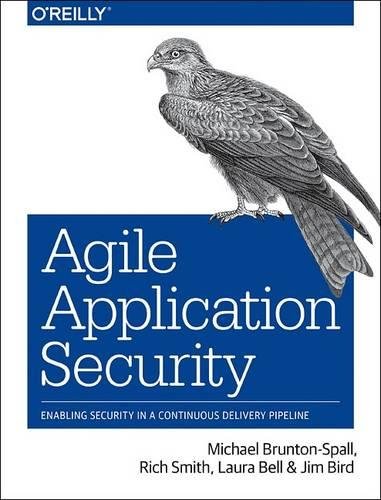
Online References
- RFC 6749: The OAuth 2.0 Authorization Framework
- RFC 6750: OAuth 2.0 Bearer Token Usage
- RFC 6819: OAuth 2.0 Threat Model and Security Considerations
- RFC 7636: Proof Key for Code Exchange (“Pixy”)
- OpenID Connect Core 1.0
- OpenID Connect Dynamic Client Registration 1.0
- OpenID Connect Discovery 1.0
- RFC 7519: JSON Web Token (JWT)
- JSON Web Token Best Current Practices
- 4. OAuth Security Workshop 2019 event web page
- Why you should stop using the OAuth implicit grant
- OAuth 2.0 Security Best Current Practice
- OAuth 2.0 for Browser-Based Apps
- OAuth 2.0 Mutual TLS Client Authentication and Certificate-Bound Access Tokens
- JSON Web Token (JWT) Profile for OAuth 2.0 Access Tokens
- Spring Security
All images used are from Pixabay and are published under Creative Commons CC0 license.
All used logos are trademarks of respective companiesAndreas Falk / @andifalk
Novatec Consulting GmbH
Dieselstraße 18/1
D-70771 Leinfelden-Echterdingen
andreas.falk@novatec-gmbh.de